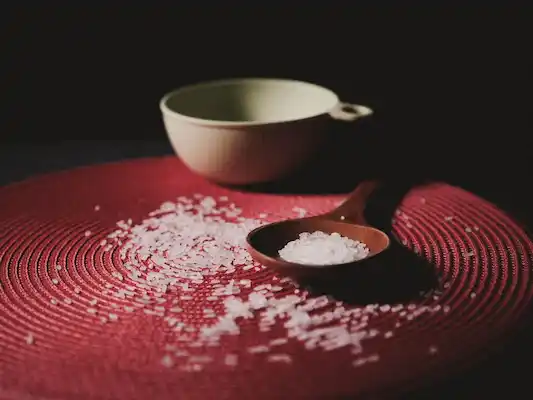People have different needs when it comes to their cooking preferences, especially when it comes to food. If you’re the type of person who loves soy sauce on your rice, you may be wondering if you can add soy sauce to your rice cooker. It may seem unusual, but soy sauce in your rice cooker isn’t as crazy as it seems! While there are some benefits to adding soy sauce to your rice cooker, there are also some things you should know before going through this experiment.
Can you add soy sauce to a rice cooker?
Yes, you can add soy sauce to your rice cooker! All you need is some white vinegar and soy sauce. In a small pot, combine three tablespoons of white vinegar, two tablespoons of soy heat, four tablespoons of water, and one tablespoon of soy sauce. Bring the mixture up to an active simmer until the liquid becomes steamy. Transfer the hot mixture into your empty rice cooker and set it on the desired cook setting.
Cooking rice with soy sauce
It is possible to cook rice with soy sauce, but you’ll want to be careful not to overdo it. If you like your rice on the salty side, just add one or two tablespoons of soy sauce and try it out. And if you are making fried rice, you will likely use soy sauce in any case. But remember that too much soy sauce can make your dish taste flat and unappetizing.
Adding soy sauce to white rice may cause the rice to clump together in big masses and give it an off-flavor. While many people believe that soy sauce can be added as a seasoning after the rice has been cooked, this practice can leave behind salt and preservatives, which will alter the flavor of your dish.
To add soy sauce to rice, follow these steps:
- Fill the inner pot with water and measure the correct amount of rice.
- Put the lid on, set the timer, and press start or cook.
- Once it’s done cooking, remove the lid and put soy sauce on your rice as desired.
What kind of rice works best with soy sauce?
The following kinds of rice you might want to consider if they are favorable for adding soy sauce.
Brown rice
Brown rice is typically healthier than white because it contains more protein and fiber. Adding soy sauce is not necessary when cooking brown rice as the natural flavors will come out while cooking, but adding things like ginger, salt, and pepper can make for a delicious meal.
Short-grain rice
Short-grain rice has shorter grains, resulting in a stickier texture once cooked. This rice is perfect for dishes like sushi or fried rice with soy sauce and other toppings or spices added during the cooking process.
Basmati rice
Basmati rice has long, slender grains that are fluffy and dry after being cooked. Basmati rice is often used in Indian dishes such as biryani or pulao. However, there are many variations on how to cook basmati rice, depending on the dish you are making. You can try adding soy sauce with this rice.
Jasmine rice
Jasmine rice is known for its light fragrance and soft, tender texture. It’s best to steam jasmine rice rather than cook it on the stovetop or in a rice cooker. For this reason, jasmine rice should be steamed separately from any sauces, so they don’t interfere with each other’s flavor. Jasmine also goes well with curries!
White rice
White rice doesn’t have much flavor but combines well with different seasonings, including soy sauce!
Health benefits
The health benefits of adding soy sauce are as follows:
- Vitamin E is an antioxidant that helps cells fight the damage caused by free radicals and other molecules called oxidants.
- Fermented soy products, such as miso and tempeh, contain probiotics that benefit your gut microbiome.
- Soy contains isoflavones, which have been shown to reduce the risk of some cancers in people who eat them regularly or use them as supplements, according to Mayo Clinic research.
Final Steps
The final answer is yes, but you must pour it into the water. Doing so ensures that the sauce gets distributed evenly over the rice and gives it a strong umami flavor. It is also easy to season your rice without handling raw meat or fish for frying. However, make sure you don’t do this if your pot was used for chicken and you’re cooking with soy sauce. In this case, just put the soy sauce on after cooking instead.
I am Anand, and I am a business owner and consultant in my day job. I have spent years studying what’s inside the products we buy. ‘Feedrer’ is a wordplay on you-know-who and talks about all things food.
